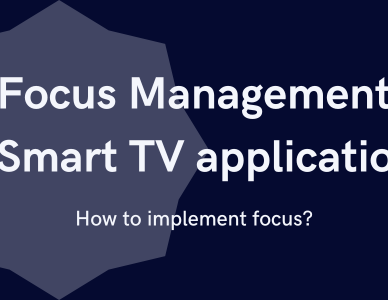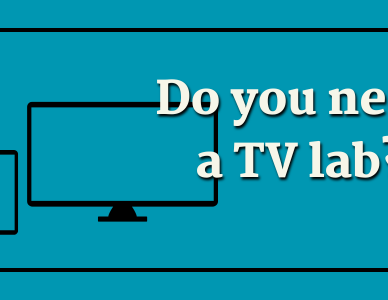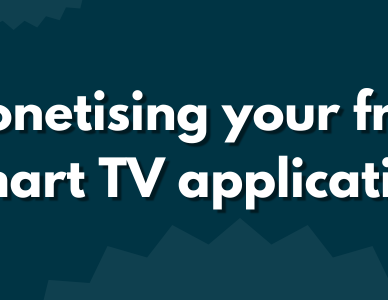CES2023: Roku, wireless TVs, and more SmartTV updates
It’s that time of year again! With the CES dust barely settled, now is a great moment to round up some of the television announcements we’ve seen. What’s new in the world of SmartTV, which innovations can we expect in our homes soon, and what is the biggest standout CES2023?

Roku’s own TV-lineup
Arguably the biggest announcement, in terms of impact on the market, has to be the fact that Roku is going to bring out its own TVs. They would previously rely on their own streaming sticks and televisions rocking Roku’s OS from brands like TCL, Hisense, and Sharp. With this announcement, Roku is joining the likes of Samsung and LG; as it is now in full control over both their physical TVs, as well as the OS running on them.
As Roku isn’t available in every country yet, they do have some catching up to do in order to fully compete with Samsung and LG — like they are already heavily doing in the United States. But, with the end-to-end control of the TV now ready, it definitely won’t be long before Roku is one of the top contenders in many of the countries they still need to launch in.
Wireless is all the rage
Not just one, but two companies announced wireless (or wireless-adjacent, I’ll explain) televisions. Starting with a new name in the field, startup DisplaceTV has demoed its truly wireless television. This TV doesn’t have any wires, and also doesn’t come with any big boxes required (like Samsung’s ‘The Frame’) for the operating system. You just stick it on the wall, and it’ll last for up to a month averaging 6 hours of daily usage (4 batteries included upon purchase). The TV does run its own operating system, which means the number of apps on it might be limited at the start.
Second, we have a more wireless-adjacent TV from LG. Their new ‘Signature OLED-M’ model comes with a standalone box for the operating system that, contrary to Samsung’s ‘The Frame’, doesn’t require any cables to be connected to the TV, it’s all wireless and can be placed anywhere in the room. Where the wireless-adjacent part comes in, is the power cable of the screen. While the DisplaceTV runs on batteries, you’ll still need to plug in a power cable for LG’s television to work.
Small improvements, no big changes
For many years now, I’ve written about the bigger changes at CES. The introduction of 4K and later 8K, rollable screens, HDR, QD-OLED, — all of those have been highlighted or introduced at some year of CES. This year, however, there honestly isn’t much to write about — at least nothing I feel that’s really game-changing. So here are some of the smaller changes and improvements:
- Samsung introduced several new Micro-LED, QLED, and OLED models (seemingly dropping the QD-OLED moniker, albeit the TVs still use the technology). Similar to other brands we’ve seen these past months, is the added support for the Matter standard to connect your smart home.
- LG has refreshed its models with many improvements, all destined to improve the viewing experience in some way, shape, or form. They have also updated their WebOS operating system with a new home screen (only available on new models), for better and easier access to apps and user profiles.
- Hisense showcased their brightest-ever mini-LED QLED TV (named ULED X), with a peak brightness of 2500 nits. As ever, Hisense continues to use its own VIDAA OS, next to models with Google TV, competing directly with the likes of LG, Samsung, and since their latest announcement, Roku.
- TCL announced and subsequently retracted its plans to release its first QD-OLED televisions, next to refreshing its lineup of mini-LED and QLED models.
- Panasonic updated its televisions with its new MZ200 series, consisting of improvements to its OLED panels; as well as adding exciting new features for games under the name of ‘True Game Mode’.
- Skyworth displayed refreshed OLED, Mini-LED, and QLED models. It also demoed its custom Coolita OS SmartTV operating system, further contributing to the fragmented TV market.
- Xperi says it plans to launch TVs powered by the TiVo operating system, with Vestel being one of the brands launching televisions somewhere this spring.
- Foxxum revealed five inaugural partners sporting their newly introduced Foxxum OS 4, including the likes of JVC and Sharp.
Some brands (namely Sony and Philips/TPVision) were notably absent at CES2023, likely favoring an event of their own somewhere later in the year.
FAST channels, and… lights?
While most of the announcements at CES are about hardware, we’ve also seen some cool software introductions and announcements being made.
Samsung announced they now offer over 1800 FAST channels globally through its Samsung TV Plus offering. That’s quite the amount of channels, which does open up the question of whether FAST should be about quality or rather just quantity.
Another announcement, funny enough also from Samsung, is the addition of an app that allows end-users to connect their TV to Philips Hue lights. These lights then change color based on the video that is shown on-screen. This technology is at the time of writing only available for specific Samsung models introduced in 2022, but that might change in the future.

Speaking of lights, if you are interested in a different approach of getting smart lights to change color based on the picture on your TV; Nanoleaf introduced a new RGB light strip that syncs to the TV with a small camera that you put in front of the screen. As it doesn’t require an app on the TV, this can work with any brand and model you’d like. It will be curious to see what works better though, an app deeply integrated into the TV or an external camera trying to grab the colors from the screen.
It shows the further integration of SmartTV with other IoT devices. Given that the Matter standard is gaining traction, it wouldn’t be a surprise to see more of these integrations reaching the market in the coming year.
Impact for developers
As always, CES is a good indicator of what’s going to change for developers that work with SmartTVs. It is a repeat of last year — life of the SmartTV developer will not be easy. If anything, developing for SmartTV is becoming increasingly more difficult. The main factor of that is the fragmented market. Let me just demonstrate that with a list of different SmartTV operating systems we’ve seen at CES 2023:
- Tizen
- WebOS
- AndroidTV
- GoogleTV
- Roku OS
- VIDAA OS
- Coolita OS
- TiVo OS
- Foxxum OS 4
- DisplaceTV’s custom OS (unknown)
The list goes on and on, there’s even more not mentioned here! It’s not easy for SmartTV developers, and it seems that things have become even harder with the announcements made at CES2023. Yes, most of these platforms are web-based, which is definitely a great benefit. It does however mean you’ll need physical copies of all of these devices with different operating systems — you can never be sure if everything works as expected without proper testing. The world of SmartTV remains ever so fragmented.
Conclusion
I’ll have to admit, for me, CES of 2023 has been rather boring if we specifically look at hardware changes and improvements. There are no real disruptive changes that will really leave a lasting impact on the market, rather just improving and iterating on already existing technology (which, don’t get me wrong, is still great to see!). The only real points for a potentially lasting impact, I’ll have to give to the wireless TVs from the likes of DisplaceTV and LG.
What definitely is interesting is the software on SmartTVs. Besides Roku launching its own TV lineup, the fact that we’ve gained another operating system or two means it’ll be interesting times for SmartTV-app developers. It doesn’t look like there’s any consolidation going to happen any time soon, meaning we’ll continue to see big SmartTV testing labs with many different brands and operating systems. The challenge of ‘one app supports all’ continues for SmartTV developers.
Interested in learning more about the ins and outs of developing for SmartTV? Check out some of my latest blogs down below.



